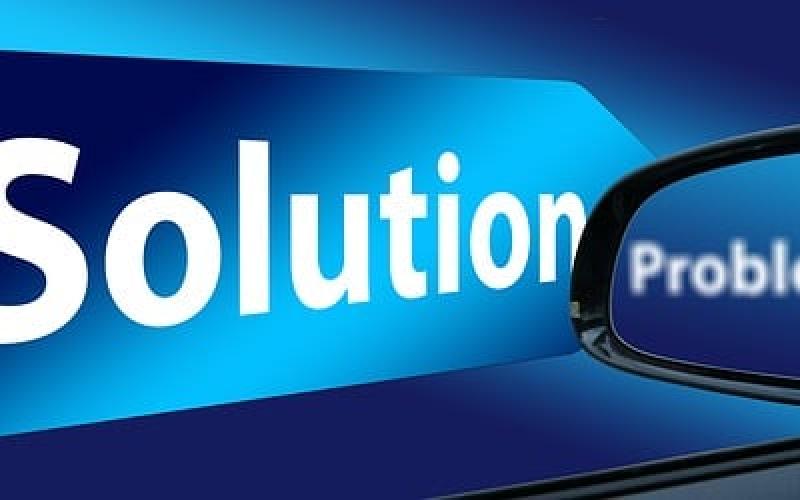
Mediation techniques reduce conflict and promote more effective negotiations. These types of techniques are extremely helpful, but conflicts can stem from both systemic and interpersonal concerns. This commentary explores both systemic and behavioral elements with ideas to help you going forward. Learn from the past and apply to the present.
We all experience conflict with others related to processes, people, and technology. So often the perception is related to people and personalities. This perception is real. The Collaboration Effect© addresses ways to collaborate better and overcome conflicts on the behavioral side. However, it has demonstrated that systemic issues are the causes of problems somewhere between 80% to 94% of the time. What causes conflict? There is tendency to blame people as a starting point and that can be true, but the facts remain that systemic issues like ill management mindset, poorly defined decision making, questions regarding roles, cultural gaps, pressure, stress, process improvement needs, and other factors can be major contributors to conflict.
How bad is it?
Conflict in and of itself may not be bad. From various studies if conflict is defined as “a struggle that results when one individual’s concern are different from another person’s” this may provide an opportunity. On the other hand, if a conflict is defined as “any workplace disagreement that disrupts the flow of work” this may indeed be negative.
What causes conflict?
Positive conflict may be:
- Competition that leads to a healthy and better result
- An opportunity to determine the best course of action
- Determining who should do what by when
- Brainstorming approaches to explore better options
Negative conflict may be from:
- Negative relationships
- Personality differences
- Bullying, verbal abuse, harassment
- Unethical and unfair behavior
Everyone has encountered conflict at work at some time. About 30% of employees feel like they are in conflict all the time. About 12% of employees see their leaders in conflict frequently.
Exploring costs it was found that
- 58% of workers surveyed have quit a job—or are considering it—because of disruptive workplace politics
- 38% want to quit because of poor workplace culture or a feeling that they do not fit in
- 86% of job seekers avoid applying to organizations that have been reviewed poorly by their workforce
In addition, another study by Columbia found that average turnover rate was 48.4% at companies with negative cultures, but dropped to 13.9% at companies with healthy cultures. Turnover can have serious monetary consequences, as it can cost 400% of the salary of a skilled contributor or leader to replace them.
Finally, discrimination suits can cost employers significant money, resources, and time. Clearly managing negative conflict is important. What can an employer due to address both systemic and interpersonal negative conflict?
Juran insights for systemic conflict
One of the great gurus related to systemic conflict is Dr. Joseph M. Juran who is considered the Architect of Quality. Having actively applied his trilogy of
- Quality planning
- Quality control
- Quality improvement
I can share that it works. This process is especially applicable to service organizations. How often do service organizations sit down and apply these principles? That is the key. Organizations need to stop, reflect, and explore what worked and why as well as what did not work and why. Only by documenting processes, exploring alternatives, and working towards quality improvement can you continually improve. What tools can you use to address these concerns?
Change management tools for systemic conflict
To drive positive systemic change there are a host of tools for your consideration. For example, you may want to consider
- Flowcharting process maps
- ADKAR analysis
- Stakeholder analysis
- Gantt charts
and others. Flowcharting is simple and yet it provides you great insights to the steps you are currently taking and offers you the opportunity to ask what is needed now and into the future. ADKAR analysis which stands for Awareness, Desire, Knowledge, Ability, and Reinforcement sets a series of goals that team leaders can achieve with the support of employees to successfully implement change strategy. Stakeholder analysis identifies and categorizes different factors such as geography, income groups, occupation, legal requirements, and others to analyze, prioritize, and determine next steps. Gantt charts are a tool to visualize and track charts scheduled over a period of time. You can learn more about these and other tools at Creately.
Behavioral items and collaboration
To promote collaboration and reduce conflict on behavioral elements consider conflict resolution training, mediation training, and other forms of alternative dispute resolution training. It has been found that leaders and managers that have taken this type of training come back as better listeners, apply nonviolent communication styles, and have higher employee appreciation scores with better trust in their manager. Collaboration is all about building connecting relationships, listening actively, and educating judiciously to build bridges and negotiate closure. Isn’t that what you want? Cohesive teams working together at maximum efficiency and having fun while they are doing it too?
Summary
Systemic concerns make up a large percentage of conflict issues. Behavioral elements interact and are areas often seen as visible symptoms. Addressing both systemic and interpersonal concerns is the key to overcoming conflicts and promoting collaboration. By paying attention, getting behind the data, listening, and working together to address concerns you can make significant positive change. This results in better customer satisfaction, greater productivity, better profitability, enhanced employee satisfaction, and better results all around. This is the type or organization others want to join and stay at going forward. Applying skills sets from process improvement, facilitation, mediation, and alternative dispute resolution go along way towards addressing conflict, negotiating closure, and allowing you to continue to improve going forward.
